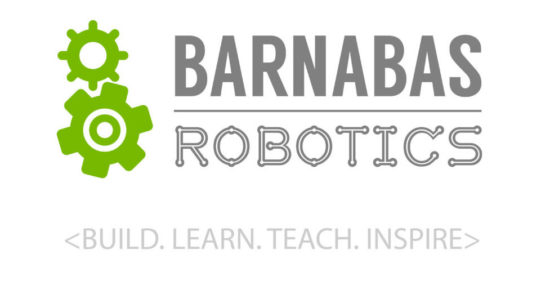- PAGE SETTINGSClick on the gear to simplify view
- Settings

Lesson Overview
Disciplinary Core Ideas
- 3-5-ETS1-1. Define a simple design problem reflecting a need or a want that includes specified criteria for success and constraints on materials, time, or cost.
- ETS1.A: Defining and Delimiting Engineering Problems: Possible solutions to a problem are limited by available materials and resources (constraints). The success of a designed solution is determined by considering the desired features of a solution (criteria). Different proposals for solutions can be compared on the basis of how well each one meets the specified criteria for success or how well each takes the constraints into account. (3-5-ETS1-1)
- 3-5-ETS1-3. Plan and carry out fair tests in which variables are controlled and failure points are considered to identify aspects of a model or prototype that can be improved.
- ETS1.C: Optimizing the Design Solution: Different solutions need to be tested in order to determine which of them best solves the problem, given the criteria and the constraints. (3-5-ETS1-3)
- Science is a Human Endeavor: Most scientists and engineers work in teams. (4-PS3-4)
Learning Target(s)
Technical Skills
- Design
- Mechanics
- Servo Motors
Life Skills
- Communicating Effectively
- Making Decisions
- Teamwork
- Problem Solving
- Confidence Building
- Preparation
Essential Question(s)
- What is necessary of all community members to achieve a common goal?
- Why do we need one another?
- Why is it important to work together?
- What is the benefit of it?
Key Vocabulary
- Servo motor
- Controller
- Battery
Depth of Knowledge Levels Addressed
- Level 1: Recall and Reproduction
- Level 2: Skills and Concepts
- Level 3: Strategic Thinking and Reasoning
- Level 4: Extended Thinking
Barriers to Learning
- Lack of fine motor skills
- Minimal understanding of angles and force
- Lack of teamwork
Anticipatory Set
- We will build a simple robot using everyday materials.
- Students see the function of a servo motor (it moves 180 degrees). Ideally, projected under document camera.
- Objective of the challenge is for ALL teams to knock the cup placed 8" away from the robot off the edge of the table
- Setting of norms for collaboration within the team and with other teams
Independent Practice
Final Assessment, project or product
- Ability of the robot to knock the plastic cup placed 8" away from the robot off the edge of the table
- Understanding 180 degrees of movement
- Reading a ruler to 8" (not centimeters)
- Students are not necessarily using all materials - they may share with other groups
Lesson Materials

Lesson Plan
Review
- What are the four parts of a robot? What type of engineer specializes in each part of the robot?
The Trash-Bot Challenge (45 minutes)
Project Overview
- Objective: The goal of the Trash-Bot Challenge is to work in teams to construct a robot that will knock over a cup from at least 8 inches away.
- Method: Each team will be given a bag of miscellaneous household objects with which to construct their Trash-Bots. Not all teams will be given the same parts. However, each team may choose to barter and/or share with one another team to accomplish the goal if they so choose.
- Learning Mindset: There is a more important common goal of all groups succeeding. This is a great opportunity for the students to experience a more collaborative mindset than a competitive one.
Vocabulary
- Servo Motor: A motor that allows for precise control of angular position. Our servo motors only have 180o range of motion.
- Servo Motor Controller: The brain of this robot. A controller capable of instructing the motor to move to an angle. The controller has multiple modes which alter the behavior of the motor.
Step 1: Forming Teams (10 minutes)
Group students into teams of two or three. Introduce and explain the main parts of the project:
- The body: Each group will be given a bag of common household items. The students will need to get creative with these to accomplish the goal of the challenge.
- Servo motor: This is a common motor used in hobby robotics. It has a range of motion of 180 degrees (half a circle).
- Servo motor controller: This device is what controls our motor.
- 4 x AA battery: This is what powers the motor.
This is a good time to review the parts of a robot described in the last lesson. The parts provided all resemble things previously mentioned:
- The Body: The household items + servo motor
- Heart: The batteries
- Brain: The servo motor controller
- Personality: You cannot see it, but it is the programming on the brain. It tells the motor when to spin and how much to spin.
Step 2: The Design Process (10 minutes)
Before building, it is always a good idea to plan out what we intend to build. This is called the design process. The design process plays a very important role in overall creative process. Design not only focuses on making things functional, but making them beautiful as well.
Each team should collaborate to come up with at least one design plan, which incorporates the parts they have been provided.
Step 3: The Build Process (40 minutes)
After a team has completed its design plan, they can start building. You can periodically have the kids bring their design up to test with the brain and battery. Encourage students to provide a hypothesis of what will happen before they activate their Trash-Bot. Ask the students to observe what actually happens.

 The students need to understand that the design process is not linear, it is circular with the best creators iterating their projects countless times.
The students need to understand that the design process is not linear, it is circular with the best creators iterating their projects countless times.Check out some samples under the video section of the additional resources

REFLECTION
- Why is the design process important to the overall process of making?
- How would you describe the design process? (is it a straight line?)
- Describe the challenges you had while making your robot.
